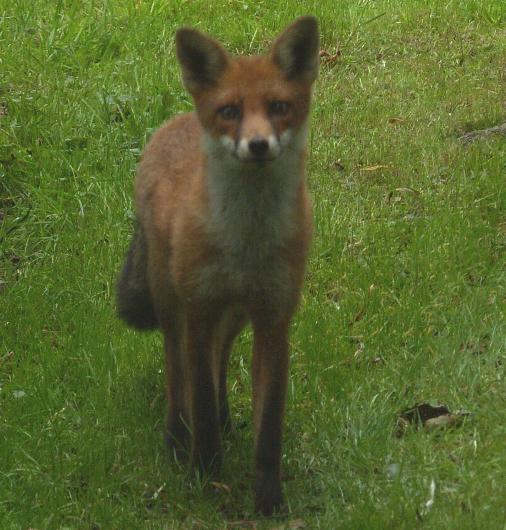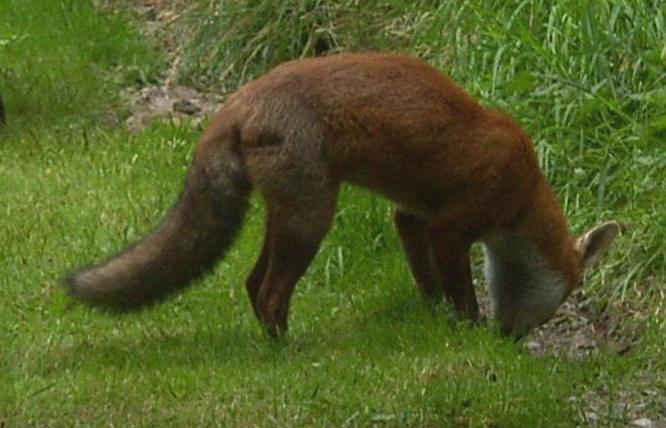
Red Foxes have traditionally been creatures of the countryside, but there are probably more sightings of them in urban areas. This is partly due to urban sprawl moving into their habitat and to the rich pickings from our wasteful society which can sustain their numbers. They no longer seem very timid and have been known to enter houses. The one pictured came up to me while playing with a loose piece of grass, giving me time to fetch a camera. It was in open countryside, so it may have been released after being injured and cared for, as there appeares to be a scar on its rear, right hip.
One of their favourite urban sites to make an earth is under a garden shed which is raised off the ground and have been known to squeeze through broken air bricks in houses to live under the floor. This can result in terrible smells from uneaten, decomposing food, urine and faeces.
They first evolved in Eurasia, spreading to the rest of the northern hemisphere during periods of glaciation and there are many subspecies which can adapt to changed environments. Settlers introduced them to Australia during the nineteenth century for foxhunting and they are now endangering many of the native species of small to medium mammals. As well as being hunted as pests and for sport, they have long been exploited for their fur - whole fox pelts were once the fashion draped around the shoulders as a stole with the head and legs attached.

There appears to be a scar on this fox's hip, showing it may have been treated for a trauma - probably an urban fox hit by a car, fixed up by an animal charity and released in the counrtyside.
As social animals their small groups are headed by a mated pair and if food is plentiful there may be lower members that are usually offspring which could have remained to help with the caring of new kits. If circumstances permit the offspring leave when they reach adulthood to set up with a new group.
Red foxes are major vectors of rabies on the European mainland, so special measures have been taken to prevent them crossing to Britain via the channel tunnel. Due to their proximity to man over the millennia they feature widely in folklore. Reynard the fox is portrayed as cowardly, deceitful and a trickster, probably based on the behaviour of the real animal.
They have long preyed on domestic fowl and other small pet animals. Unfortunately their opportunistic instinct induces them to kill as many birds as possible, probably with the intention to return and carry them off to bury for later consumption. To the keeper this appears a senseless waste if the act is interrupted or discovered soon after. Young lambs can be attacked, sometimes even during the birthing process if it is prolonged and taking place in the open.
In the garden they may scrape in the lawn for worms and larvae and if they decide to take up residence, can make a mess. They will unearth a pet which has been buried so to avoid this the grave must be very deep. Bonemeal can also attract foxes and they may dig up plants to find it.
Preventive measures include:
Back to GARDEN CREATURES top /\